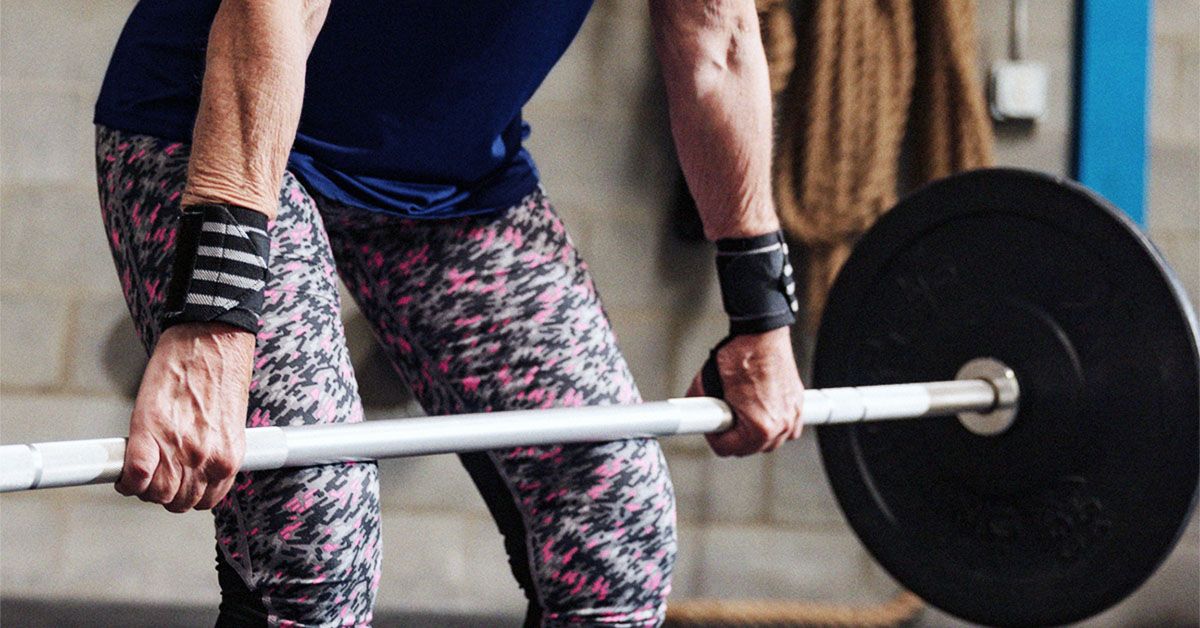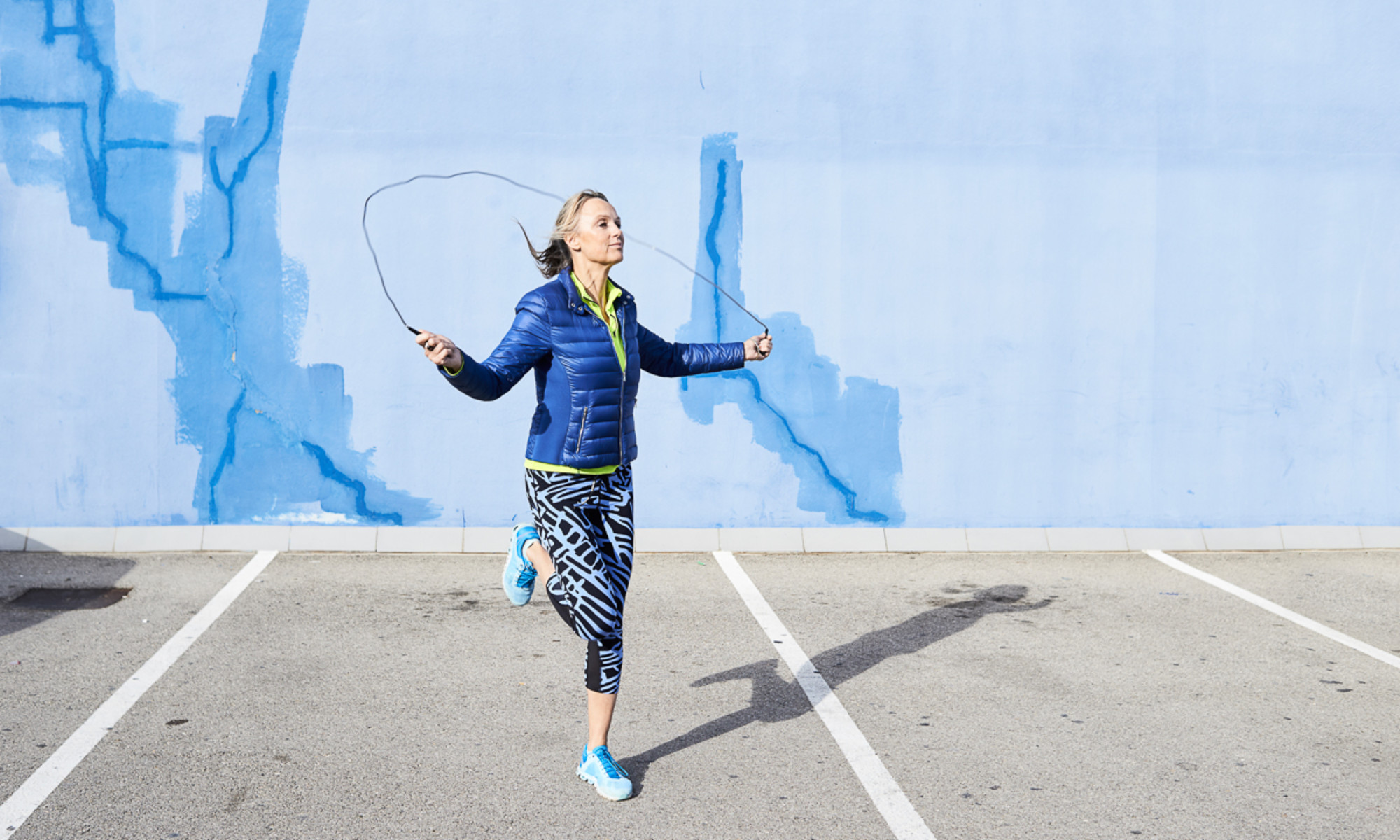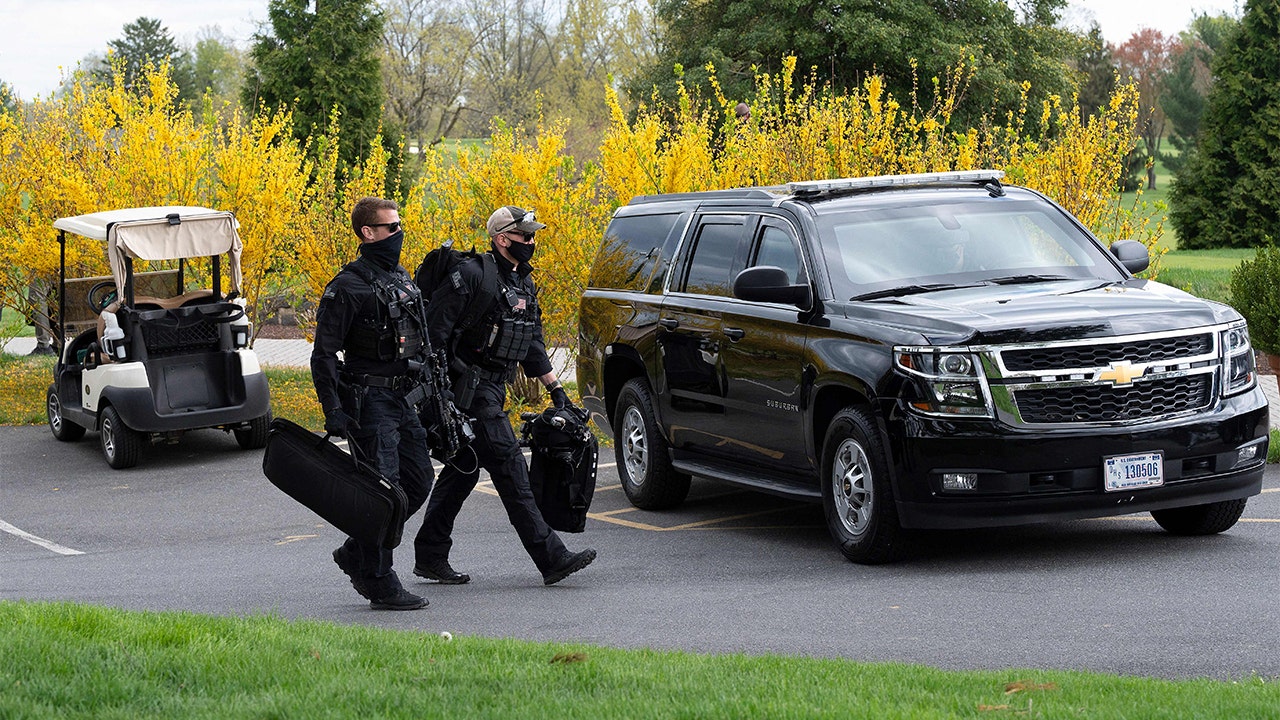Fitness
Stroke: HIIT may be more effective than steady, moderate exercise

- Stroke is a condition where blood and oxygen are not able to get to the brain.
- Exercise is an important part of stroke recovery.
- Researchers from McMaster University have found that repeated one-minute bursts of high intensity interval training (HIIT) were more effective in improving aerobic fitness after a stroke than traditional, continuous moderate exercise.
Each year, about 15 million people around the world have a stroke — a condition where blood and oxygen is not able to get to the brain.
While stroke is treatable, researchers estimate that
Previous studies show that
A recent study found that repeated one-minute bursts of high-intensity interval training (HIIT) was more effective in improving aerobic fitness after a stroke than traditional, continuous moderate exercise.
“Stroke is a
“Research has shown that aerobic fitness levels are low in people with stroke, often at levels that are inadequate to perform activities we might do every day such as climbing stairs or walking fast,” Tang explained to Medical News Today. “We know that there are challenges to participating in exercise after stroke, however, such as finding time to fit it into their day.”
“We also know that therapists can be hesitant to push patients with stroke to higher intensities of exercise despite research that suggests that more intense exercise may be beneficial. Instead, they are more likely to keep exercise intensities lower. We felt that HIIT would be an important, feasible, and time-efficient option for exercise after stroke,” she added.
The study is published in the journal
For this study, researchers recruited 82 stroke survivors who were in the period between six months and five years after a stroke.
Study participants were randomly grouped to either receive HIIT or moderate exercise sessions for three days of the week over 12 weeks.
“Both groups exercised three times per week on non-consecutive days for 12 weeks,” Tang detailed. “Both groups included three minutes of warm-up and two minutes of cool down. All exercise was performed on a recumbent stepper machine (NuStep).”
“For participants in the HIIT group, the exercise protocol was 10 one-minute intervals of high-intensity exercise (80-100%) interspersed with nine one-minute intervals of lower intensity recovery (30%),” she continued. “Exercise time, not including warm-up and cool-down, was 19 minutes. The moderate-intensity continuous exercise sessions were 40-80% intensity for 20-30 minutes.”
At the study’s conclusion, scientists found that the
“We expected to observe greater improvements in fitness levels in the HIIT group but were excited to see how much they did improve,” Tang said. “The improvements in fitness levels in the HIIT group were within the range of values associated with lower risk of hospitalization and stroke.”
Additionally, researchers found that this improvement stayed above clinically important thresholds in the HIIT group eight weeks after the end of the study, which was not the same case for the moderate exercise group.
“This finding is important as it means that the gains made after HIIT were maintained to a greater extent than after moderate-intensity continuous training. Nonetheless, it is important that regular exercise becomes part of a lifelong healthy lifestyle after stroke given that people with stroke are at higher risk of having another one in the future.”
— Ada Tang, PT, PhD
“We believe that the higher intensities achieved (are the) key difference. By using an interval training format where bursts of high-intensity exercise is interspersed with recovery intervals of lower intensity, we can achieve the benefits of more intense exercise without risk of over-fatigue.We will continue to examine innovative ways to promote exercise and physical activity after stroke to reduce the global burden of this condition,” Tang said.
After reviewing this study, Christopher Yi, MD, a board certified vascular surgeon at Memorial Orange Coast Medical Center in Fountain Valley, CA, told MNT he found it to be of interest and excitement.
“This study shows that high-intensity aerobic exercise can significantly improve cardiovascular fitness in stroke patients, which is a substantial long-term benefit for stroke recovery,” Yi explained.
“Patients who [experience] strokes are often severely debilitated, with poor (quality) of life and decreased longevity. Finding better ways to enhance the recovery of strokes will improve the quality of these patient’s lives, reduce the risk of recurrent strokes and cardiovascular events, and ultimately increase survival rates.”
— Christopher Yi, MD
“I would like to see how patients with more severe physical impairments after a stroke perform with HIIT. I would also like to see long-term outcomes of this study beyond eight weeks, including overall quality of life. Lastly, I would like to understand the underlying biological mechanisms from HIIT, including cardiovascular function and neuroplasticity,” he added.
MNT also spoke with Ryan Glatt, CPT, NBC-HWC, senior brain health coach and director of the FitBrain Program at Pacific Neuroscience Institute in Santa Monica, CA, about this study.
“The study is intriguing but raises questions about the generalizability of HIIT benefits for a broader stroke population,” Glatt said. “Improving aerobic fitness is essential to reduce the risk of secondary strokes, but the study’s participant pool limits the broader application of its findings. Future research should include more diverse and severely impaired stroke survivors to truly validate HIIT’s effectiveness and long-term impact.”

Fitness
New Study On How Long To Work Out A Week For Health Span & Life Span

mbg Health Contributor
Jenny is a San Francisco-based mbg contributor, content designer, and climate & sustainability communications specialist. She is a graduate of the University of California Santa Barbara. An avid open-water swimmer, Jenny has worked for healthy living and nutrition brands like Sun Basket, Gather Around Nutrition, and Territory Foods.
Fitness
Is Walking Exercise? A Closer Look at the 'Hot Girl Walk' Trend

Inspired by trends like the “hot girl walk” or “mental health walk,” perhaps you’ve been spending more time walking around your neighborhood or meandering in a local park. While we all know that being outdoors (and even sleeping outdoors) has benefits, is the same true for simply walking when compared to other forms of exercise? In other words, is walking really exercise?
You may not build up the sweat with walking that you would with a jog or climbing the stairs. Because of that, some people may not realize how many calories they burn when they’re out for a stroll. Fortunately, experts say going for a walk can do a body and mind good.
What is the hot girl walk trend?
During the summer of 2020, TikTok personality Mia Lind was feeling isolated and coping with negative thoughts. So she started to go on four-mile walks to think about gratitude, her goals and how hot she is. Inspired by rapper Megan Thee Stallion’s song “Hot Girl Summer,” Lind coined her outings “hot girl walks” and started sharing them online.
Does walking count as exercise?
Yes, walking is exercise, and experts across physical and mental health disciplines agree. Sergii Putsov, a certified personal trainer with a PhD in sports science, says, “Walking for just 30 minutes every day can lower your risk of severe cardiovascular disease and dementia.” April Crowe, a licensed clinical social worker at Paramount Wellness Retreat, adds that “walking in natural environments also boosts cognitive function and creativity, thereby providing a unique kind of therapy.”
Does walking do more than build your heart’s strength? As it turns out, yes. The Mayo Clinic has identified additional health benefits of walking. According to the medical center, walking can improve muscle endurance, boost energy, lower blood pressure, strengthen bones and support the immune system. You can see benefits both outdoors and on a treadmill.
Walking alone can also change the shape of your body. In 2017, the Journal of Physical Activity and Health did a meta-analysis of 22 clinical trials related to walking and health. The results revealed that brisk walking reduced waist circumference, fat mass and body fat percentage to a “clinically significant” degree in men and women under age 50 living with obesity. It can also lead to overall weight loss. So, that “hot girl walk” you take could cause noticeable changes to your body if you stick to it.
Is walking enough exercise on its own?
Walking can certainly be combined with other activities as part of a circuit. You can also walk as a warm-up for jogging or cycling. Walking on its own can deliver results and may have fewer negative impacts on your body than other high-impact sports.
Gregor Parella, also a CPT, says of walking for walking’s sake: “It is much better than jogging because jogging can put undue pressure on your ankles, especially if you are heavily built. On the other hand, brisk walking is one of the best exercises because it tones up your leg and calf muscles [without the same pressure on joints].”
Even walking at a slow pace is better than being stationary at home, but a faster pace will also hasten the health benefits. A 2019 study in Atherosclerosis found that “walking pace was inversely associated with the risk of death and development of cardiovascular disease” in male physicians with an average age of 67.8. In other words, the faster you walk, the lower your risk of death and cardiovascular disease.
Regarding how long you should walk, the U.S. Department of Health and Human Services recommends at least 150 minutes of moderate-intensity physical activity each week, or 30 minutes a day for five days, for substantial health benefits. This can include walking briskly at 2.5 mph to 4 mph. Walking at a slow or leisurely pace (2 mph or less) is considered a light-intensity activity, which is likely to produce some health benefits compared to sedentary behavior, but not as many benefits as walking briskly.
The health benefits of walking
There are many health benefits to walking. Not only can the activity lower cortisol levels, like all forms of exercise, and give you some fresh air, but you may see various tangible improvements in the following health indicators:
- Better sleep. Low-impact physical activity can lead to more fitful sleep. One small 2020 study published in Sleep Health found that increasing daily steps led to better quality sleep, especially among women.
- Lower risk of type 2 diabetes. According to the American Diabetes Association, walking at least 30 minutes per day could help you stave off type 2 diabetes. Increasing your daily step count may keep your glucose levels in check.
- Lower blood pressure. A 2022 study from the American Family Physician reported that a regular walking schedule with moderate intensity can lower systolic blood pressure, diastolic blood pressure and heart rate.
- Improved balance. Remaining steady on your feet is increasingly important for your health as you age. Harvard Health Publishing states that walking builds lower body strength, which improves balance.
- Lower risk of cancer. Walking may even reduce your risk of some cancers. A 2013 study out of Cancer Epidemiology, Biomarkers & Prevention found that postmenopausal women who walked at least seven hours per week had a 14% lower risk of getting breast cancer than women who walked three hours or less every week.
Ways to make walking more intense
If you hit a plateau with your walking routine, you can add some intensity to your walk without having to jog or switch activities. Making your walk more rigorous could increase the number of calories burned by giving your body a new challenge. Ways to up the ante on your daily walk include:
- Increase the time of your walk. If you’re currently walking 30 minutes a day, add more time in 10- or 15-minute intervals. Putsov recommends walking at least 45 minutes a day if your goal is weight loss.
- Increase your speed. You can also add more intensity by picking up speed. Free fitness workout apps with GPS enabled, including Nike Run Club, can help you track distance and time to calculate your pace.
- Wear wrist or ankle weights. Tying on weights like Bala Bangles can kick your walk up a notch. These types of weights can be worn on your ankles or wrists to provide resistance.
- Alternate your pace. Both CPTs we spoke to recommended walking intervals to make walking more challenging. Try walking for five minutes at a regular pace, then five minutes of speed walking, and so on.
- Add an incline to your route. Are you walking on a flat surface for most of your route? Find a hill to increase the difficulty of your trek. You may also want to add retro-walking (walking backward) up an incline.

How to stay motivated walking
It’s easy to get excited about a new workout routine initially, and it’s just as natural to get bored or frustrated when you stop seeing major results. You may find music and podcasts helpful because they make time appear to pass more quickly. Just make sure that these sounds are background noise so that you can still be aware of your environment and those around you.
Crowe also recommends setting clear, achievable goals. She says it can help to remind yourself about how far you’ve come, explaining, “Recording all achievements made during walks, whether through mobile apps or personal journals, will act as a reminder,” which can push you harder next time.
If going it alone is making it harder to stay on track, try walking with a partner or seeing if there is a walking club in your area. Parella says a walking buddy can increase your sense of accountability and make the experience more fun. You may also try new scenery to stay motivated during a walk. Getting some sun will increase your vitamin D intake, which may improve your mood.

Safety tips while walking
Before you hit the sidewalk on your daily walk or hot girl walk, be sure you’re well-equipped for the task. While a neighborhood or lakeside stroll may seem harmless, you still want to set yourself up for a safe return.
- Bring water. In moderate temperatures, REI recommends drinking one half-liter (about 17 oz.) of water every hour. If it’s hot outside, you should increase your water intake. Becoming dehydrated on a walk could leave you feeling dizzy or sick.
- Wear the right shoes. You don’t want to be taken out of commission halfway through your walk because of a sprained ankle or serious blisters. Get fitted at an athletic store for quality walking shoes that fit your foot shape and arches.
- Let someone know your location. Make sure when you’re walking in nature or at night that someone can find you. Sharing your location on Google Maps is one easy way to accomplish this.
- Wear reflective gear at night. Wear a reflective jacket or vest if you’re walking early in the morning or after dusk. You can also get reflective tape and add it to your shoes and the back of your pants.
- Use the sidewalks. The U.S. Department of Transportation states that you should always walk on the sidewalk. If there is no sidewalk, walk facing traffic.
- Plan your route. To avoid getting lost or wandering into areas that may be unlit or unsafe, plan your route ahead of time. This will help you remain aware of your surroundings while allowing you to give someone your exact location before you head out.
- Carry your phone. If you’re walking alone — especially at night — make sure you carry your phone in case of an emergency. However, do not let your phone distract you to the point where you are not alert and aware of your surroundings.
Fitness
Chris Hemsworth leaves fans in shock after he shows off bulge in workout video

Marvel star Chris Hemsworth has left his fans speechless after sharing an unintentionally NSFW workout routine.
In honour of the actor’s 41st birthday this weekend (11 August) we’ve decided to revisit the time he left fans with their jaws on the ground after posting a workout video which left very little to the imagination.
You’re all welcome, by the way.
Taking to Instagram, the actor decided to get his followers motivated by giving them a glimpse into his workout routine, captioning the video: “Good little session. Finishing it strong with some core.”
However Hemsworth’s routine of pull-ups, crunches, and boxing drills was the last thing on anyone’s mind as they were all way too busy staring at the sizeable bulge in his trousers.
Check out the, ahem, eye-opening clip below:
“Good little session. Finishing it strong with some core,” he captioned the video.
Now Hemsworth is best known for playing Thor aka the God of Thunder in the MCU. But if this clip is anything to go by, it seems like he’s got a Mjölnir war-hammer of his own.
For the most part it wasn’t too obvious, but when it came to the Thor: Love and Thunder actor’s last exercise, fans just couldn’t look away.
“Thank you both for the performance,” commented one awe-struck fan.
“So they let you keep the hammer?” joked a second.
A third cracked: “The last exercise, wasn’t it supposed to be one leg at a time?”
And a fourth added: “That um… um last exercise… respectfully DAYUM.”
Instagram/@chrishemsworth
And let’s just say Instagram’s feature that allows users to leave GIFs in the comments was being put to use, too.
Chris was also cheered on by his health and fitness company Centr, who left a much more civil message in the comments.
“Our fearless founder leading by example,” they wrote.
Centr, according to its website, provides users with personalised tools and workouts so you can train like Chris.
“What started as Chris Hemsworth’s personal wellness journey has evolved to inspire millions to unlock total well-being,” they say in their mission statement.
“Always deeply passionate about health, it wasn’t until he needed to train like a superhero that Chris connected with world-class wellness experts to achieve his goals.”
But it isn’t just exercise that helped Chris get that Thor physique. Food has been a key part of the actor’s training journey.

Instagram/@chrishemsworth
According to his personal chef Dan Churchill, Chris would consume 4,500 calories per day while training to play Thor.
Those 4,500 calories are broken down into 10 meals per day, and the more I think about it, it’s a wonder that Chris has time to do anything besides eat and train all day.
As well as helping out Chris with his superhero diet, Churchill creates recipes for Centr users to help them get the right nutrition to match their training – though the rest of us probably don’t need the full 4,500 calories…
-
Fitness1 week ago
For healthy aging, light exercise or sleep beats being sedentary
-

 World1 week ago
World1 week agoThe Take: Is Silicon Valley going MAGA?
-

 News1 week ago
News1 week agoVideo: Biden and Harris Greet Americans Released From Russia
-
/cdn.vox-cdn.com/uploads/chorus_asset/file/25416392/STK473_NET_NEUTRALITY_CVIRGINIA_D.jpg)
/cdn.vox-cdn.com/uploads/chorus_asset/file/25416392/STK473_NET_NEUTRALITY_CVIRGINIA_D.jpg) Technology1 week ago
Technology1 week agoNet neutrality is on ice
-

 Politics1 week ago
Politics1 week agoTrump replies to DA Bragg in case to get conviction tossed in light of Supreme Court immunity decision
-

 Movie Reviews1 week ago
Movie Reviews1 week agoTrap Review: M. Night Shyamalan’s Silly, Self-Aware Thriller Is A Messy Tale Of Two Movies – SlashFilm
-

 Politics1 week ago
Politics1 week agoHouse Freedom Caucus chair ousted by Trump-backed challenger in Republican primary showdown
-

 Politics1 week ago
Politics1 week agoGeorgia activist steals the show after being introduced by Trump at Atlanta rally: 'Incredible'














